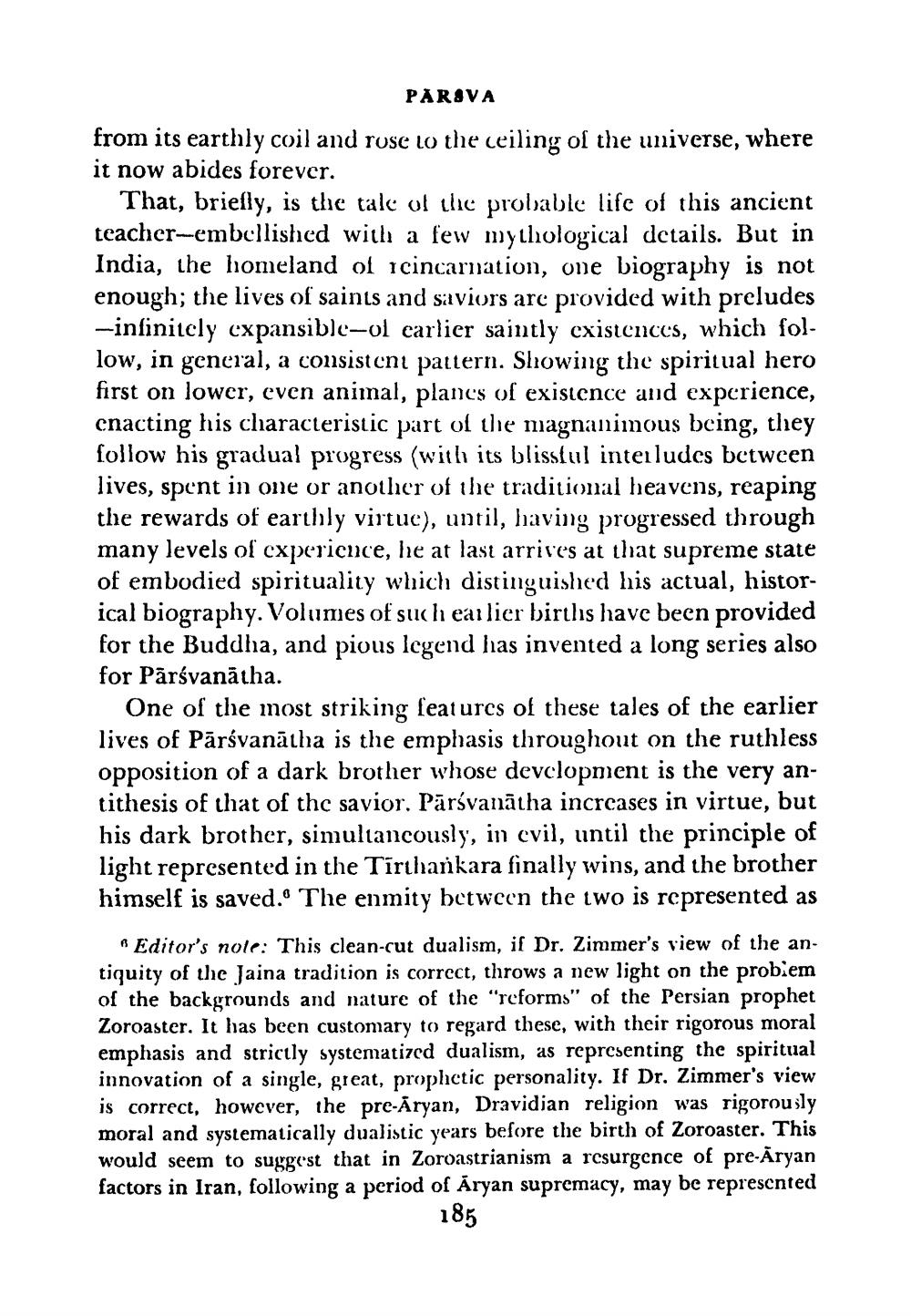________________
PARSVA
from its earthly coil and rose to the ceiling of the universe, where it now abides forever.
That, briefly, is the tale of the probable life of this ancient teacher-embellished with a few mythological details. But in India, the homeland of icincarnation, one biography is not enough; the lives of saints and saviors are provided with preludes -infinitcly expansible-ol carlier saintly existences, which follow, in general, a consistent pattern. Showing the spiritual hero first on lower, even animal, planes of existence and experience, cnacting his characteristic part of the magnanimous being, they follow his gradual progress (with its blissful interludes between lives, spent in one or another of the traditional heavens, reaping the rewards of earthly virtue), until, having progressed through many levels of experience, he at last arrives at that supreme state of embodied spirituality which distinguished his actual, historical biography. Volumes of such earlier birtlıs have been provided for the Buddha, and pious legend lias invented a long series also for Pārsvanātha.
One of the most striking features of these tales of the earlier lives of Pārsvanātha is the emphasis throughout on the ruthless opposition of a dark brother whose development is the very antithesis of that of the savior. Pārsvanātha incrcases in virtue, but his dark brother, simultancously, in evil, until the principle of light represented in the Tirtharkara finally wins, and the brother himself is saved. The enmity between the two is represented as
Editor's note: This clean-cut dualism, if Dr. Zimmer's view of the an. tiquity of the Jaina tradition is correct, throws a new light on the probiem of the backgrounds and nature of the "reforms" of the Persian prophet Zoroaster. It has been customary to regard these, with their rigorous moral emphasis and strictly systematized dualism, as representing the spiritual innovation of a single, great, prophetic personality. If Dr. Zimmer's view is correct, however, the pre-Aryan, Dravidian religion was rigorously moral and systematically dualistic years before the birth of Zoroaster. This would seem to suggest that in Zoroastrianism a resurgence of pre-Aryan factors in Iran, following a period of Aryan supremacy, may be represented
185




